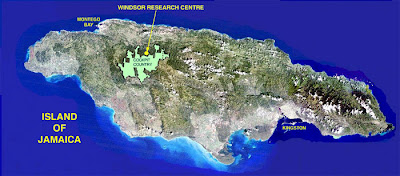Jamaica is a karst landscape which was built by the erosion and chemical dissolution of limestone. Through out the formation of Jamaica's cockpit country the landscape continued to erode forming several cockpits, as well as caves. Cockpit country has been formed though several years of these various processes of erosion, and therefor shouldn't stop any time soon.
(map of cockpit country)
Thus, I believe that since Jamaica has been subject to consistent weathering, it will only continue. As the weathering continues, the cockpits continue to erode, which is caused by water gathering momentum downhill carrying debris, which will eventually be carried out to sea via sink holes.
(Sink Holes)
The annual debris runoff will consistently wear down this karst landscape eventually collapsing caves, weathering down the hills, as well as instances of mass wasting events though out the Jamaican landscape.
(cave and sink hole formations)
Comparable to the massive land slide like the one at judgement cliff. These massive wasting events will only continue to occur and only further advance the eroding process.
(judgment Cliff landslide)
Jamaica is a highly marketable tourist attraction, primarily for its natural beauty, and local beaches. Thus some of the most immediately felt damages will be at the dealt by the waves along the coast line.
(cliff houses Jamaica)
These waves will beat down the coastal cliffs, thus forming wave cut notches, which will expand until the withstanding weight is to much for the foundation to hold. Thus, peeling back the coastline, while leaving a barrier to surround the remainder of the island, thus transforming modern day Jamaica into a future barrier island.
(Barrier Island Formations)
However this theory could be completely dismantled based upon the behavior of the plate tectonics.
(Plate Layout)
Based on the fact that Jamaica was formed by a volcanic arch much like the majority of islands, we know that Jamaica resides within a tectonically active area, therefore Jamaica’s fate could be dramatically shifted by a possible devastating earth quake much like the recent episode in the neighboring island of Haiti. Which would have a instant effect on the population of Jamaica and reshape the geological landscape immediately.























